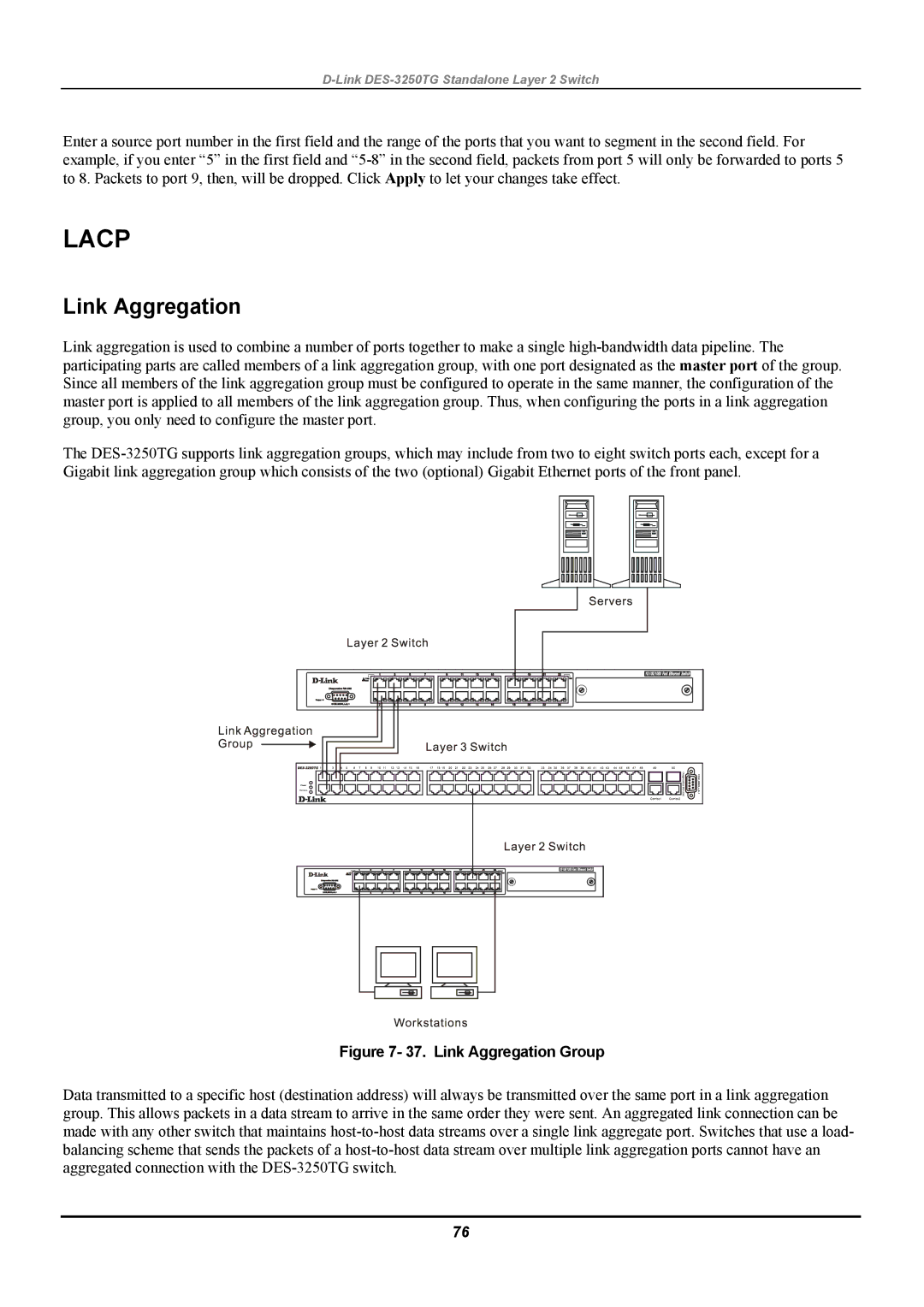
D-Link DES-3250TG Standalone Layer 2 Switch
Enter a source port number in the first field and the range of the ports that you want to segment in the second field. For example, if you enter “5” in the first field and
LACP
Link Aggregation
Link aggregation is used to combine a number of ports together to make a single
The
Figure 7- 37. Link Aggregation Group
Data transmitted to a specific host (destination address) will always be transmitted over the same port in a link aggregation group. This allows packets in a data stream to arrive in the same order they were sent. An aggregated link connection can be made with any other switch that maintains
76
